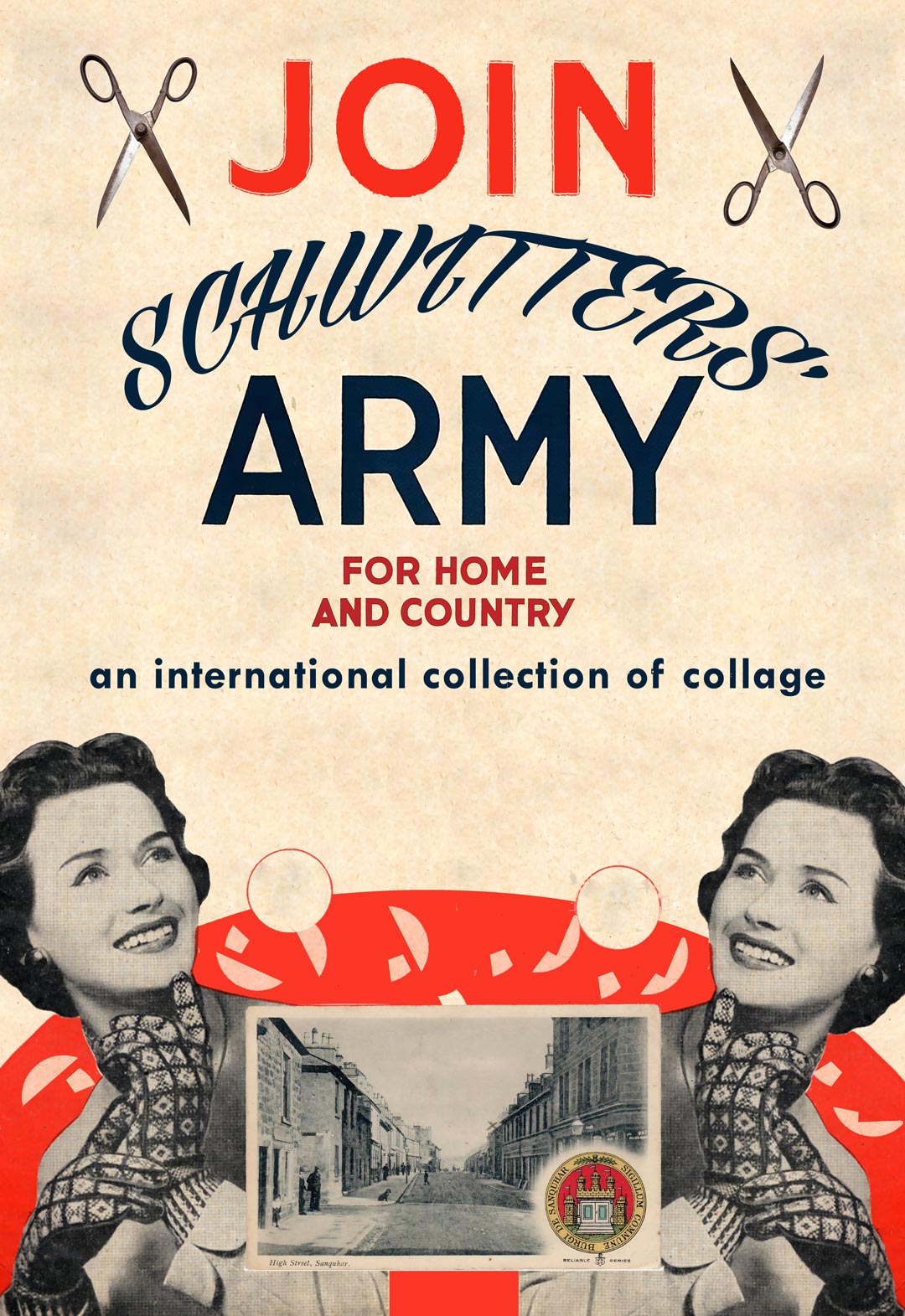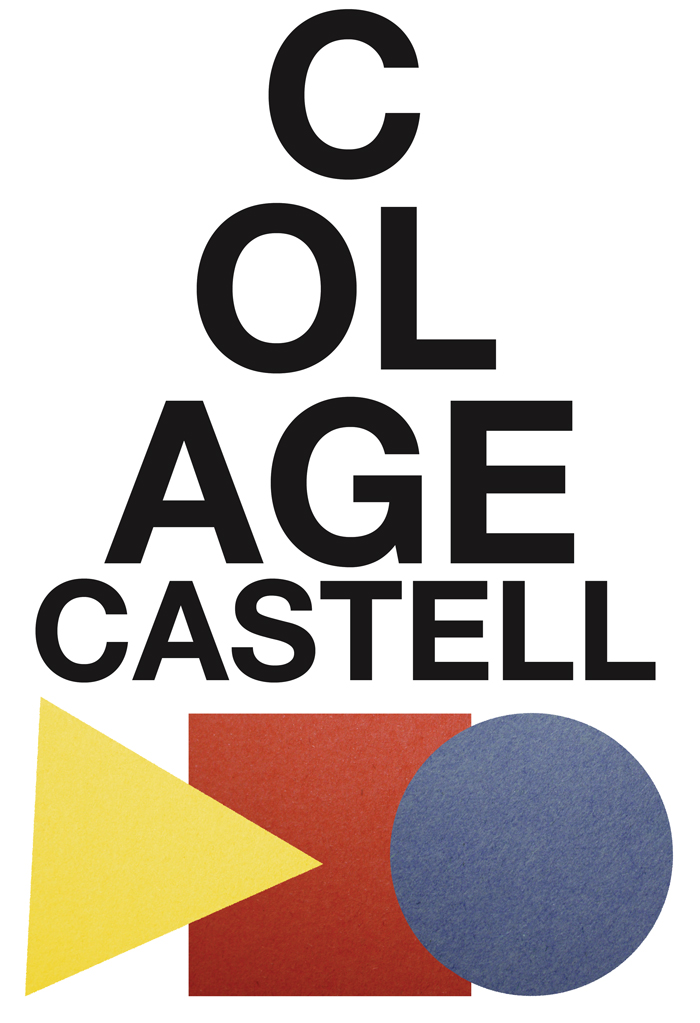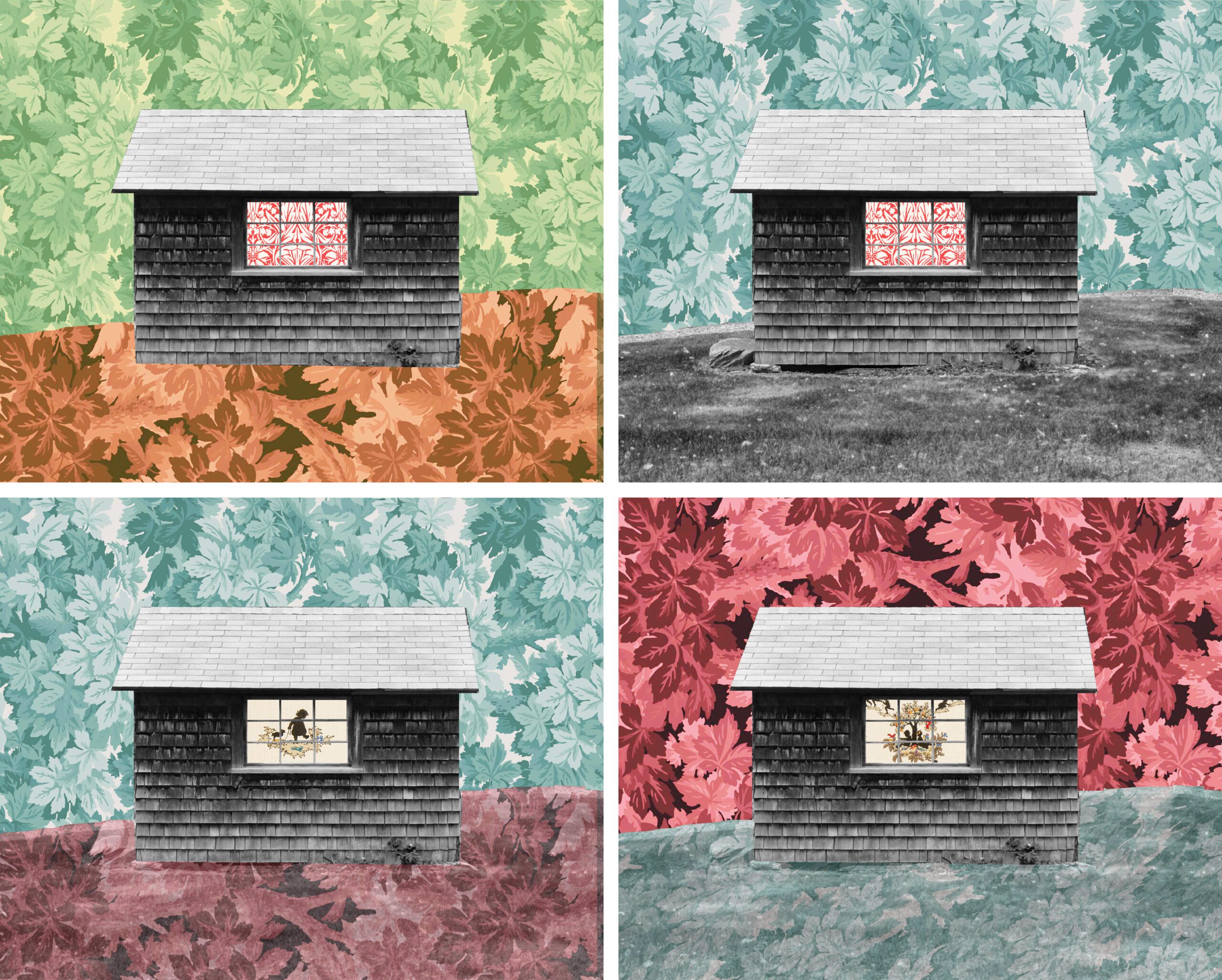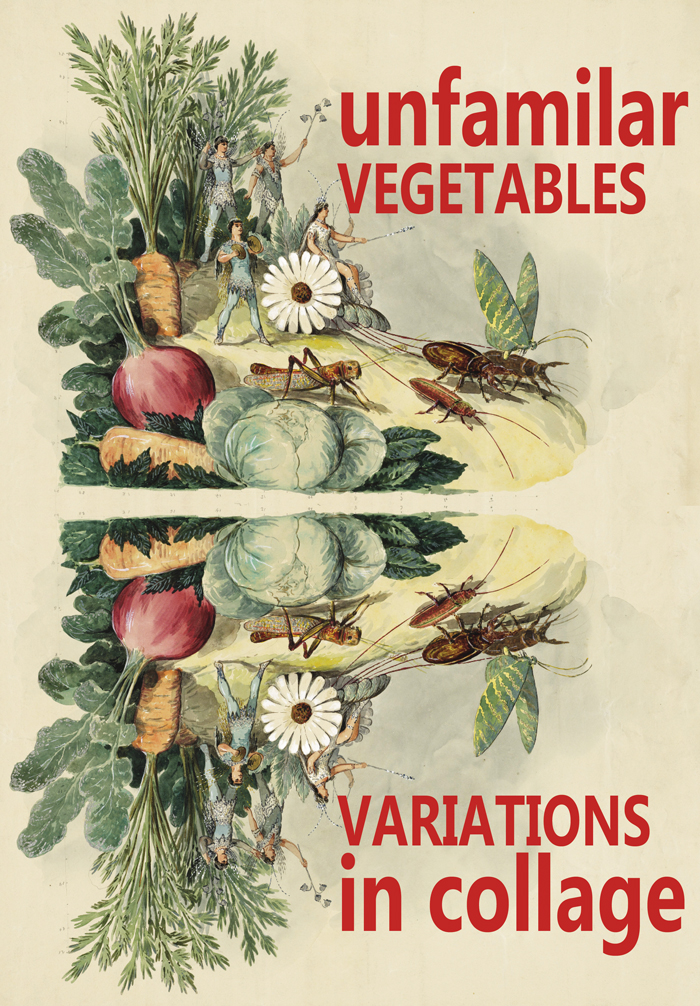Archives
Kolaj Institute maintains an archive on collage artists and receives materials such as exhibition announcements, catalogs, and other material generated by the artist’s practice and makes these materials available to researchers, writers, and curators. The Archive will manifest in a number of ways as a physical and digital archive. Artists may deposit physical and digital documents into the archive by opening a file with the Institute.
Schwitters’ Army
It began, “Ric Kasini Kadour invites collage artists to submit a two-dimensional collage for inclusion in the Schwitters’ Army. There is no theme. If you’re a ripper, send him a ripped collage. If you’re a digital artist, print and send a digital work. If you’re a collaborator, send a collaboration. Send a collage that shows what kind of collage artist you are.”
The artwork at MERZ Gallery is a permanent collection of international collage art curated by Ric Kasini Kadour in January and February 2020. The Collection is a survey of art by active collage artists in 2020. Artists who contributed artwork to the collection are Veterans of The Schwitters’ Army. The Collection lives at MERZ in Sanquhar, Scotland and online.
For Kurt Schwitters, MERZ was his manifesto. He explained it as “the combination of all conceivable materials for artistic purposes, and technically the principle of equal evaluation of the individual materials.” His intention was to give anything from a used bus ticket to a piece of wire found on the street “equal rights with paint.” MERZ liberated artists by declaring anything potential material for their art making and, to illustrate this concept, he made hundreds of collages which he called MERZ pictures. Such forward thinking led art historian Isabelle Ewig to call him the “Father of the fathers of Pop.” Really, any collage artist working today owes a debt of gratitude to Schwitters, who not only legitimized the medium, but also established a working practice and aesthetic that is the basis of many artists’ contemporary practice.
In September 2022, Kolaj Institute will publish a book about the project. The Schwitters’ Army Book will contain essays about the project and a catalog of the artwork with commentary about the artists who are represented in the collection.
Collage Castell
The myth of the solitary genius is pernicious and today we are expected to toil on our own in the studio and bear alone the burdens and challenges that come with an artist’s life. In reality, most artists don’t work alone: Artist communities, networks, partners are as integral to the creation of art as the materials we use. While we may work alone, the diffusion of art, the presentation of art to the community, is a complex collaboration with gallerists, art writers, museum directors, and others. Art is a human activity and humanity is nothing but one great collaboration.
That collage is uniquely suited for collaboration is not a new idea and is a topic frequently discussed in the pages of Kolaj Magazine. Collaboration seems to be in the DNA of the medium itself, often taking place with the silent partner of pre-printed media. The Dadaists, because of their love of chance, used collaboration to spark creativity. One never knows what the other person is going to do. One must be quick-witted and nimble, open to the possibilities, and able to go with the flow. Collaboration is not about making the perfect work of art. Perfection, rather, is in the exchange not the product.
In the spirit of these thoughts, we invited collage artists to join in a Collage Castell. Enclosed with the Kolaj LIVE Online Program Book were four Bauhaus-inspired starters on which we invited artists to start a collage and then send to another artist to complete.
International Mail Art Collection
Structures define our world. Some of us live among skyscrapers, row houses, condominiums. In Vermont, many live among houses and barns. Rokeby Museum, a National Historic Landmark in Vermont, is a collection of houses, barns, and outbuildings that served a variety of ends.
Built in the 1930s, the Tourist Cabin, the last original structure to be built at Rokeby, played host to an international exhibition of Mail Art. Rokeby Museum invited artists from around the world to send a piece of mail art that reflects or responds to their home or a building in their home community. These “postcards”, arriving from across the United States and Canada and from such far away places as Brisbane, Australia; Rosario, Argentina; and Stuttgart, Germany, bore artists’ thoughts about the idea of home and the buildings that inform their sense of place.
After the exhibition, the work was archived.
Unfamiliar Vegetables
Unfamiliar Vegetables is a collection of collage where each of the fifty artists interpreted, in their own way, Carlotta Bonnecaze’s 1892 Carnival float design Familiar Vegetables. Artists from North America, Europe, and Latin America responded to a call from the Mystic Krewe of Scissors & Glue. Individually, the collages reflect the work of independent artists and show a variety of approaches to appropriation or intervention.
The work was originally exhibited at Kolaj Fest New Orleans in 2019 and then collected into a book. The archive of original works are jointly maintained by Kolaj Institute and the Krewe.
Collectively, the book offers many opportunities to consider collage as a medium, genre, and community. Project organizer Christopher Kurts observed, “Unfamiliar Vegetables is an experiment in controlled chaos….tiny variations within each artist’s creative sphere accumulate until the outcomes are as unique as the people creating them.”




